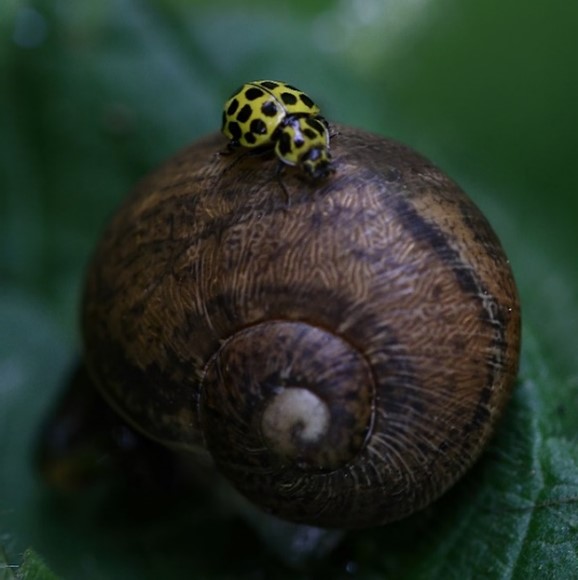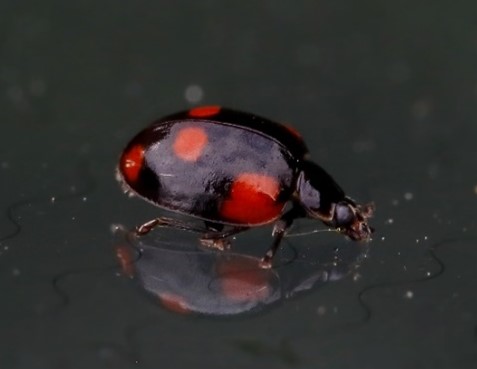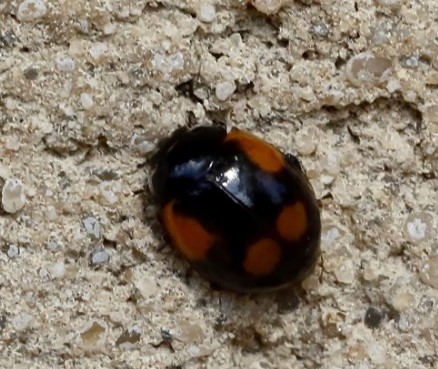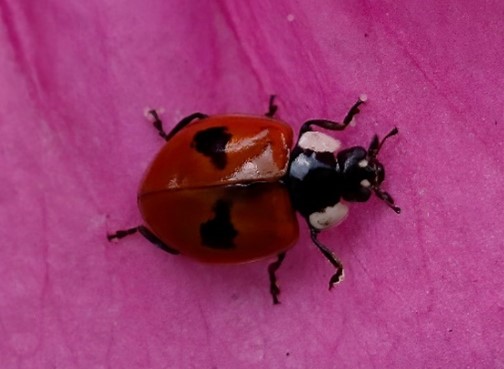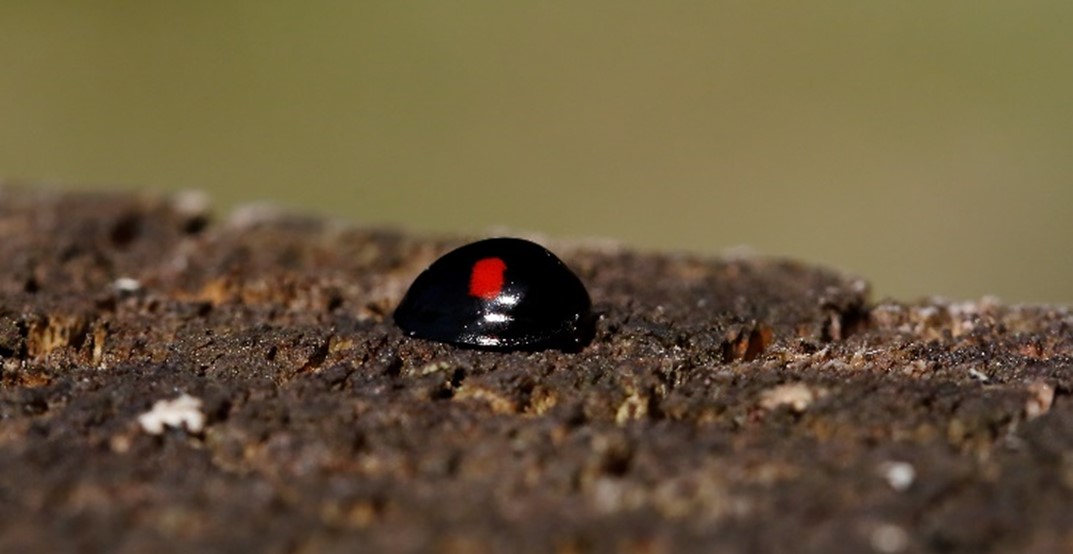Local naturalist, Chris Barlow, looks back over a successful year spent recording and enjoying the North East’s ladybirds
I’ve been a wildlife watcher since childhood and used to take photographs with a film camera as a teenager before studying Environmental Science at University. The arrival of digital cameras in the early 2000s allowed me to identify more and more as the cap on how many photos you could take was gone. While learning how to use a macro lens and photographing insects for the first time in 2014 I found what appears to be the first record of Water Ladybird at Druridge Pools (below left) and only the second known Northumberland location at the time after Gosforth Nature Reserve. The same day I also saw my first 22-spot, looking like a jockey on the back of a large snail (below right)
More time with the camera in the garden produced my first 14-spot while my regular inland patch of Harwood Forest gave me my first Larch Ladybird in 2019 which I have seen annually there since but nowhere else so far. I was then caught by surprise watching Winterwatch when my picture popped up between the presenters while they were explaining how they survive the winter without freezing!

My first 2-spot (below) was then discovered inside my flat in 2020, emerging from overwintering in one of my plants just as lockdown was announced.

The Great Park mitigation land on either side of the A1 on the north side of Newcastle became my ‘garden’ for the permitted lockdown exercise time and that was where I found my first 10-spots, one of our most varied species, every one was different and none had 10 spots! After some determined searching, the drainage ponds for the Great Park also turned out to be the home of Water Ladybirds.
As we re-entered lockdown in January 2021 lots of birdwatchers took on a 5km from home challenge to help fill their time. I joined in but did not restrict myself just to birds and found I could reach both Big Waters and Killingworth on foot and was able to confirm for a friend that he had found 14 Orange Ladybirds hibernating on a gravestone in the churchyard at the latter, a new species for me.
When NHSN then announced the North East Ladybird Spot soon after I took on the challenge to focus on Ladybirds for the year. A further check of the churchyard revealed 79 Orange Ladybirds on a single gravestone (92 were on the same one again in December 2021) with over 150 across the area; Harlequins proving to be the only other hibernator here, the species spreading at a remarkable rate, I only saw my first in Northumberland in 2018. My regular weekend walking routes in early March saw the sun get stronger and I began to notice ‘changes’ on the walls under evergreens in particular and despite being only 4mm long several times the shiny spots turned out to be my first Pine Ladybirds, one tree near Jesmond Dene having over 30 on it.
The daily walks to work through Gosforth produced several moments of confusion with a wide array of ‘new’ species to identify before discovering that several species have different forms; Harlequins and 10-spots as well as 2-spots displaying a variety of colour schemes. A rare occasion when I drove to work resulted in the discovery of my first sighting of the 6 spotted version walking across the windscreen at the end of the day!
Walking and exploring around the green areas in Fawdon and the Great Park produced further species with Kidney-spots (below left) sunning themselves on the bark of Ash trees in particular while the Orange Ladybirds (below right) at Killingworth stirred from their slumber and started to spread out with more found at Havannah NR.
One under-recorded species for our region is the 24-spot. A tiny vegetarian species rather than an Aphid hunter it is surely under-recorded rather than absent given its preferred plant host, the Red Campion, is a common flower in places. A focussed hunt to find one was finally rewarded with one at Tyne Riverside Country Park (below).
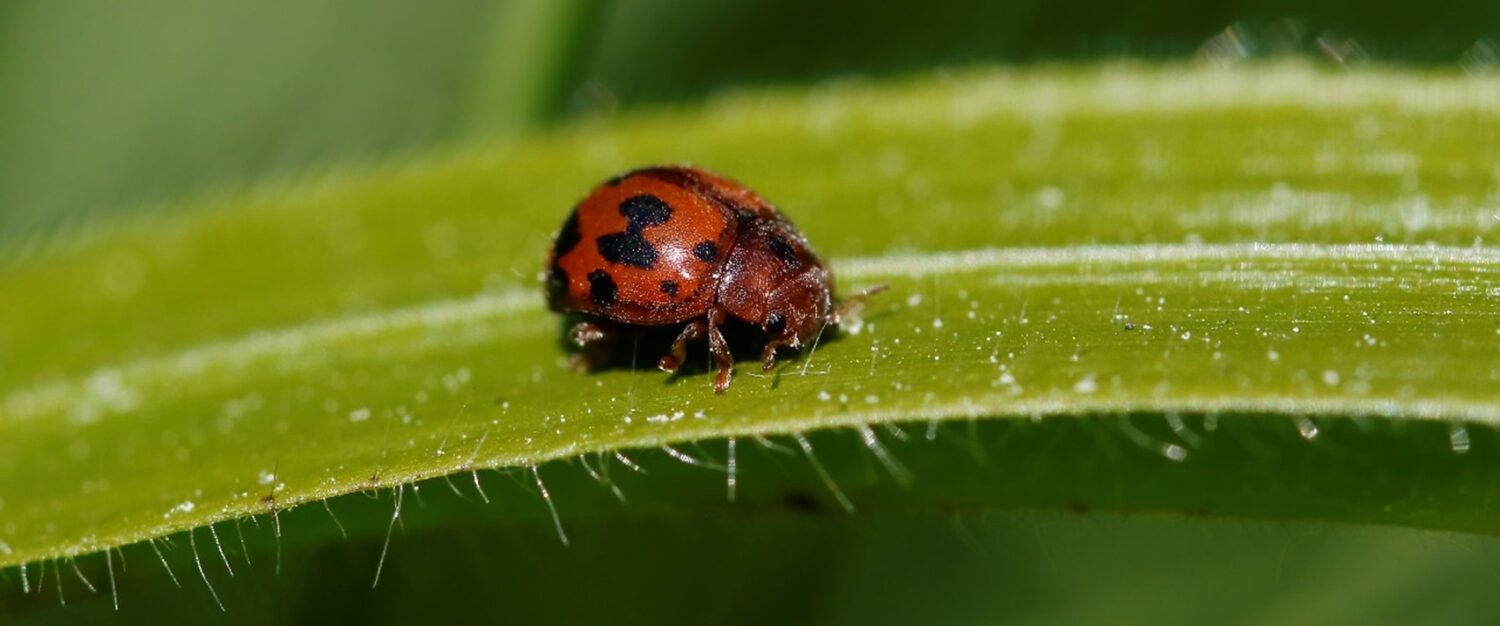
All the emerging adults disappeared in late May and the first larva started to appear not long afterwards as the next phase of the life cycle started and my walks started to record large numbers of the spiky Harlequin and 7-spots in particular but I soon discovered that all the species have different markings in this phase too. Exploration of areas with Conifers in North Tyneside revealed some of the specialist species linked to those woodlands with Eyed (below left) and Striped Ladybird (below right); while a Water Ladybird larva at the small pond at Rising Sun CP was a great find.
By late July adults of the noticeable species were re-emerging so following some research the hunt was on for other species rarely recorded in the North East. A search of the coastal strip on the edge of the golf course at Newbiggin for 11-spot ladybirds was unsuccessful but more than ample compensation came in the form of the 3rd, 4th and 5th Northumberland records of the smaller Adonis’ (below) tucked into the dead thistle heads.

Reedbeds at Killingworth Lake and Banks Pond notched up yet more new locations for Water Ladybird, 14-spots were found in Great Park and Warkworth while I finally found my first 10-spot that actually had 10 spots on a fencepost searching for roosting spots (below).

Following up on recommendations online about checking the tips of new conifer growth into September more Adonis’ were found at Havannah NR along with large numbers of Pine and Cream-spots. The ridiculously mild December saw active Orange Ladybirds and Harlequins right up to the 31 December while fenceposts and wooden railings revealed hibernating clusters of those that had gone to roost waiting for Spring 2022.
Hopefully, this review will give you all inspiration to keep your eyes open for Ladybirds all year round. At the start of 2021, I thought of ladybirds as something to find after Spring had started for a couple of months but this is clearly not the case…

